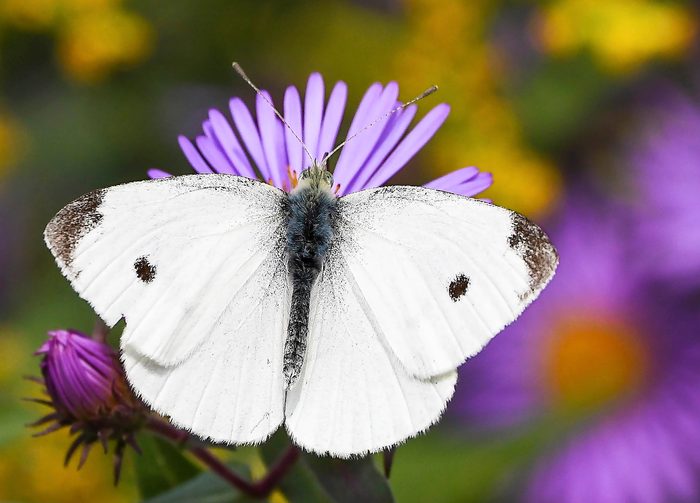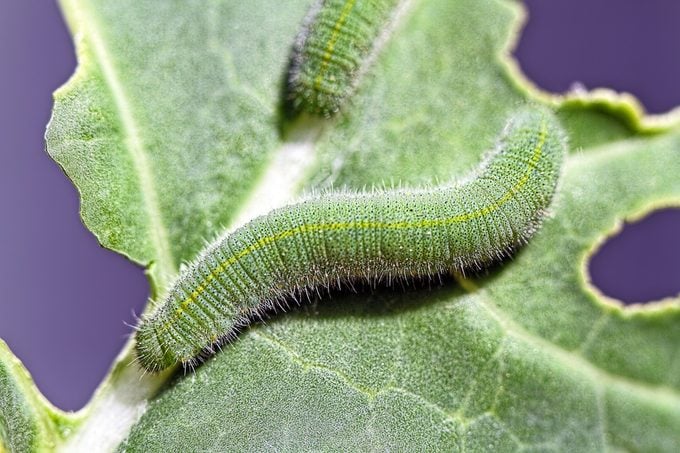What Gardeners Should Know About the Cabbage White Butterfly
Updated: Aug. 09, 2023

Learn how to identify a cabbage white butterfly. Discover what they eat, where they live and how to save your veggies from their caterpillars.
What Markings Do Cabbage White Butterflies Have?
Adult cabbage white butterflies have a wingspan of 1 1/4 to 1 3/4 inches. The upperside of wings are white, hence the name. The forewings have one dark spot on males and two on females, as well as charcoal-colored tips.
Check out 6 common swallowtail butterflies you should know.
Where Can I Find Cabbage White Butterflies?
Cabbage white butterflies are native to Eurasia. They have been introduced to southern Canada and most of the U.S. and are common in most open areas, like road sides and gardens. To attract them, try planting these long-blooming flowers that hummingbirds also love. You can usually find them near their favorite nectar plants, mustards and asters, too.
Check out the top 10 butterfly host plants to attract pollinators.

What Do Cabbage White Caterpillars Look Like?
The caterpillars are green with a faint yellow line along the top of their bodies. Look closely and you might see fine white hairlike structures sticking up—they release chemicals and ward off ant attacks.
Love butterflies and moths? Follow these steps to plant a caterpillar cafe to attract a mix of caterpillars.
What Do the Caterpillars Eat?
Cabbage white caterpillars are known to chew on members of the cabbage family, including broccoli and mustard plants. Females lay one egg that changes color from white to yellow under plant leaves. The caterpillars then hatch and feast on the plants.
Got holes in your leafy greens? You have cabbage worms.
How Can I Protect my Plants From Cabbage White Caterpillars?
If you’re concerned about cabbage white caterpillars on your plants, add a floating row cover to plots during planting for protection. Skip the pesticides, as they can be harmful to other helpful bugs.
Next, check out the ultimate guide to growing milkweed for monarch butterflies.




















